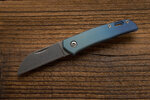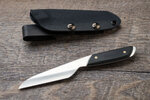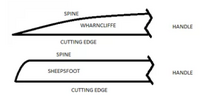Barnfixer
Member
- Joined
- Jan 25, 2021
- Messages
- 468
On occasion I get the bug to pick up a new knife and I’m drawn mainly drop point style blades. Now I’ve been pondering a sheepsfoot style for some reason. What are the advantages and disadvantages of a sheepsfoot blade? They do look a little beefy.







